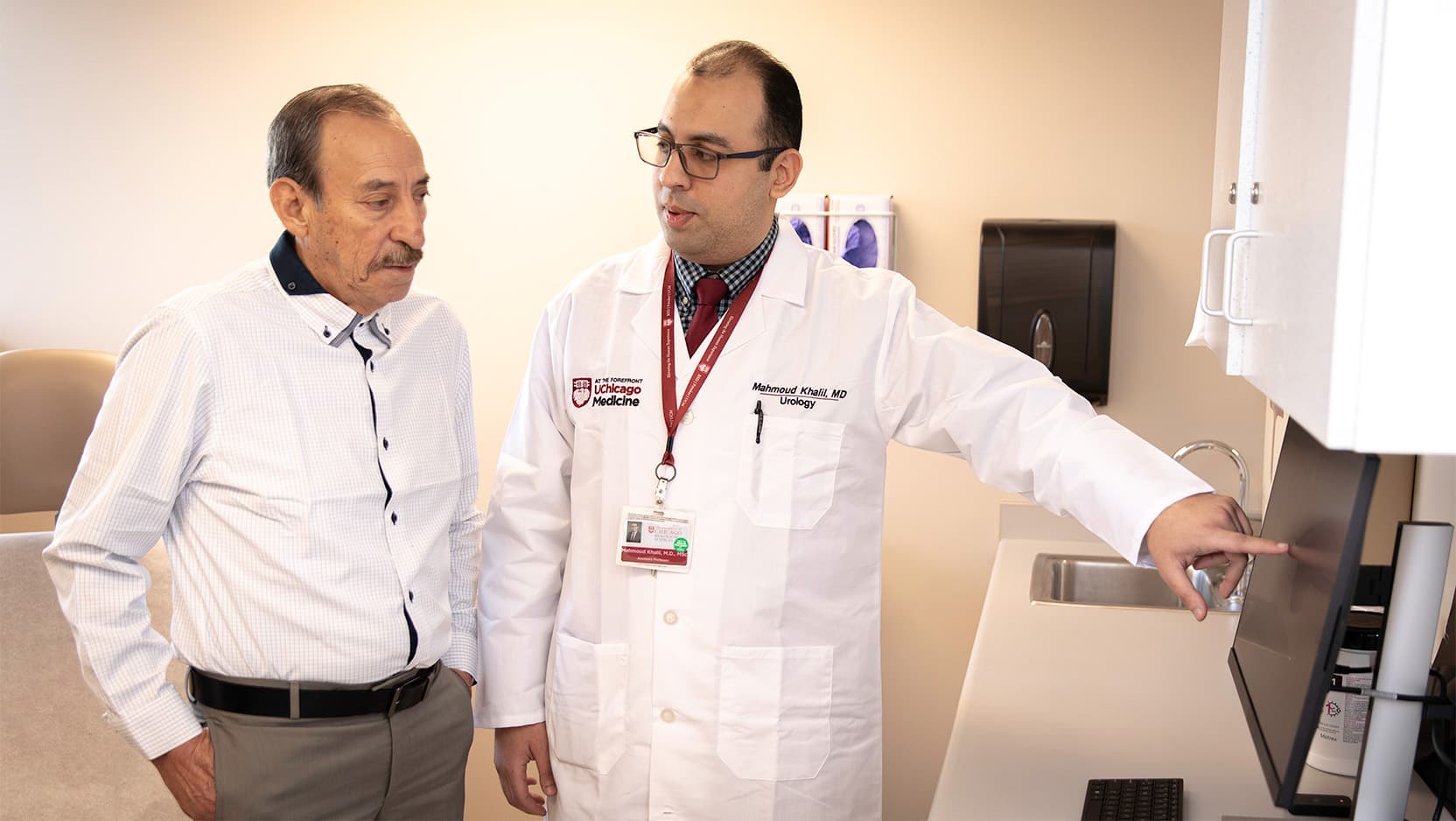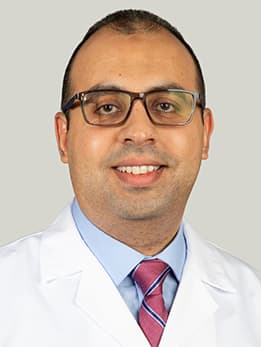Water jet therapy offered at Ingalls Memorial provides relief for enlarged prostate

For four years, Guillermo Arellano-Garcia suffered in silence.
The forklift operator had developed an enlarged prostate, a common condition among older men where the prostate gland grows and presses against the urethra, causing problems with urination and negatively impacting sexual function in some cases.
The condition, also known as benign prostatic hyperplasia, or BPH, turned Arellano-Garcia’s life upside down.
He frequently felt the urge to urinate but struggled to do so. To completely empty his bladder, he needed to wear a catheter with a urine collection bag attached. He also developed painful urinary tract infections (UTIs), some of which required hospitalization.
Arellano-Garcia, then 60, tried several medications and underwent two different prostate procedures, but they provided only temporary relief. He stopped being his usual outgoing self and chose to avoid social gatherings.
“I didn’t want to leave the house because I was embarrassed by the catheter bag and afraid of what would happen if the catheter broke,” Arellano-Garcia said. “I was walking around and going to work, but I felt like I was dead because I was so depressed.”
UChicago Medicine’s urology team takes action
Arellano-Garcia’s prior urologist told him there was nothing more that could be done; he’d simply have to live with incontinence, discomfort and the catheter.
“He was devastated,” said his daughter, Marilu Barriga, who helps oversee his care.
Arellano-Garcia took the advice of his primary care physician and came to the University of Chicago Medicine, where the urology team immediately ran tests to rule out prostate cancer and bladder malfunction.
They determined he had remaining or regrowth of obstructing prostate tissue, and a stubborn UTI.
UChicago Medicine urologist Mahmoud Khalil, MBBCh, talked to Arellano-Garcia about his options. To remove the obstructing prostate tissue, the team could do another transurethral resection of the prostate (TURP) or a laser ablation surgery.
But there was also another option: Aquablation, or water jet therapy, a relatively new technology that can remove problematic tissue without impacting the nearby anatomy tied to urinary control and sexual function.
What is Aquablation therapy?
The therapy uses robot-assisted, image-guided water jets to blast out excess prostate tissue. No incision is made in the abdomen, as the prostate is reached through the urethra.
Because the water is kept at room temperature, it doesn’t damage the nerves that are important for sexual function, Khalil said.
Despite being delivered at high pressure, the water jets spare important structures that prevent semen from going back to the bladder — a condition called retrograde ejaculation that commonly occurs after most other prostate surgical procedures.
Aquablation, which is offered at UChicago Medicine Ingalls Memorial Hospital, only takes about an hour.
“It’s pretty smart technology,” Khalil said. “We not only can treat the prostate efficiently, but also preserve ejaculatory function. That’s unique and a great advantage for patients.”
Ingalls already has more than a dozen water jet therapy procedures scheduled in 2025, but it isn't for everyone. There are several ongoing clinical trials investigating the effectiveness of water jet therapy for patients with very large prostates, Khalil said.
In addition, some health insurance plans, including Medicare, may not authorize the procedure if a person has a history of bladder or prostate cancer.
Life after water jet therapy: ‘I feel great now’
Since receiving water jet therapy at Ingalls in September 2024, Arellano-Garcia, now 65, has been pain- and problem-free.
The prostate tissue was abated so thoroughly that Khalil doesn’t expect Arellano-Garcia to require any additional treatments. Soon, he’ll only need yearly follow-ups.
Arellano-Garcia, an Addison, Illinois, resident, said he felt ready to return to work two days after the procedure.
“It changed my life,” he said. “I feel great now. People even say to me, ‘He’s back!’”
Arellano-Garcia and his daughter want to encourage others suffering from BPH to find the right doctor.
“We saw hope at the University of Chicago Medicine,” Barriga said. “We saw a light at the end of the tunnel.”

Mahmoud Khalil, MBBCh
Mahmoud Khalil, MBBCh, specializes in managing both benign urologic conditions and urologic cancers. His expertise includes skill in medical and surgical treatments for complex kidney stones and benign prostate enlargement.
Discover more about Dr. KhalilUrology Services
Urologists at the University of Chicago Medicine provide treatment for a wide variety of urologic conditions in men and women. We believe in developing and using innovative and comprehensive treatments that safeguard your quality of life by preserving normal urinary and sexual function.
Learn more about our urology care.